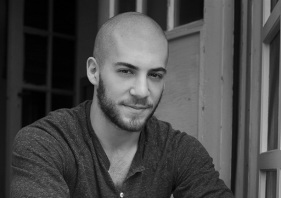3 Questions with Kieran Kesner: CyArk Photographer in Residence
Getting to know the man behind the camera
CyArk visits amazing sites whose stories deserve to be told around the world. We live in a highly visual society. With the rise of social media and self-publishing, we have an unprecedented opportunity to share cultural heritage with a whole new audience.
Just this month, we launched the Photographer in Residence program to complement and bring a photographer's eye to our rigorous documentation process and selected award-winning photographer, Kieran Kesner to help debut the program. Kieran will be joining our field teams over the next six months to document the process and help us share the compelling yet unknown stories of these incredible places. We have some exciting projects lined up for the summer and fall from South East Asia to the Americas and Eastern Europe, 2017 promises to be a busy one!
He will be taking over our Instagram feed each project, so I hope you will sign up and follow along! If you're not on Instagram, we will also post his work to Facebook and Twitter as well as share updates with our supporters via email.
Keep reading to learn more about his photographic journey and more.
Q: How did you first become a photographer?
I feel like I’ve always been bound to be a photographer. My dad is a filmmaker and TV producer and my mom an artist; from the get go, I had a visual upbringing. I also spent considerable time with my grandfather in his darkroom he built in his basement. It was there I learned the fundamentals of photography at an early age. In high school, I had an amazing photography teacher. We worked with large format photography, shooting on 8x10 film, which is a completely different way of working than I do now, but it helped me understand the processes that are involved in creating an image. In high school I received a bunch of awards for my photography. And it was for a something I loved doing - creating images and sharing with people what I was seeing. So I continued with it. I went NYU Tisch School of the Arts where I studied photography and imaging and learned about the history of photography and what role the medium has played since it's birth. I always had a dream to become a photojournalist. For years I had admired the works of the great documentary photographers but knew very little about how to actually become one. Upon graduation I traveled to Ukraine and documented the conflict there. When I returned, I shared my work and through a mutual friend, I was introduced to the Page One editor at the Wall Street Journal. Shortly after that introduction, I received an email asking if I wanted to go to Liberia to cover the Ebola outbreak. I jumped at the opportunity. The last few years I’ve had my work published by the New York Times, the Wall Street Journal, National Geographic, Time…everyone I’ve ever wanted to work for. And now I’m ready for the next adventure with CyArk.
Q: What drew you to work with CyArk?
Initially, I was drawn to the photographer-in-residence position at CyArk for the opportunity to travel to unique locations. I’m always interested in seeing more of the world, places I’ve never been before, places that I’ve been to and I want to visit again. CyArk was offering that opportunity. On top of that, I was interested in learning the new technologies and tools CyArk uses in the field. I’ve always wanted to experiment with VR, 360, drones, photogrammetry and laser scanning. CyArk’s photographer-in-residence position was this amazing opportunity to travel, learn new things and tell really interesting stories in new ways.
Q: Is there anything you’re particularly excited to sink your teeth into? Do you think anything is going to translate particularly well to how you’ve done photography in the past?
Good question. I don’t think I know enough yet to know what’s going to translate. This week I’ve had an opportunity to dip my toes into everything and I’m only just beginning to understanding how to use these technologies and how these visual tools could be used for creative storytelling and creative documentation. So as I get a better understanding of how these tools are used, I’ll start to get a better understanding of how I can implement them in my work.
My plan for when I go on my first CyArk project is to just go there doing what I do, seeing what I see, documenting what I see, and trying to build a narrative. And then from a technical point of view, learning the technologies and not experimenting at all. Learning how to become a technician because that’s very important here at CyArk. And eventually, maybe by the next site, seeing how I can take what I do and take what you guys do and start to see what’s possible.


